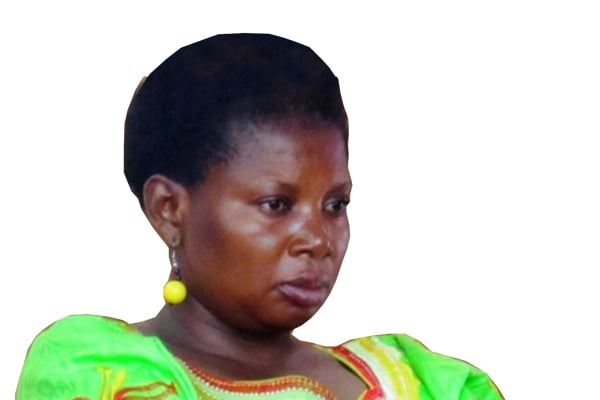Prime
Only 4 of 64 Kalangala islands have pit-latrines - new report

Facility. A public pit-latrine at Mwena Landing Site, Bugala Island in Kalangala District. PHOTO BY SLYVESTER SSEMUGENYI
What you need to know:
Constraint. Leaders in Kalangala blame the lack of enough pit-latrines on poor physical planning.
For the last two decades, Samuel Ssekitto, 50, a resident of Kachugwa Landing Site, Mazinga Island in Kalangala District, has failed to dig a pit- latrine.
Whenever it is time to answer nature’s call, Ssekitto and his three other family members, including two children and a wife, ease themselves in a bucket and later dump the waste in the lake.
“It is hard to find a household here with a pit-latrine. It is a culture, we all defecate in the lake, the bucket is only used at night ,” Mr Ssekitto confidently reveals.
A latest district survey reveals that four out of the 64 inhabited islands in Kalangala District have no lavatory facilities .
The compliant islands, according to the survey conducted in December, include Bugala, Bukasa, Buyovu and Serinya, where residents own both public and private pit-latrines.
On the other 60 islands, residents dispose of human waste anywhere in the surrounding bushes and other established places locally known as “Twatwa” which human waste is later discharged into the lake by rain.
On densely populated landing sites like Kitobo, Misonzi and Ssemawundo in Bufumira Sub-county, residents move long distances to use pit-latrines at health centres and neighbouring schools.
The few residents who owns small private pit-latrines always empty them during rainy season and all the sewerage goes into the lake .
No single pit-latrine
The survey indicates that Mazinga Sub-county, which is home to more than 10,000 islanders, has no single pit-latrine. Residents in Mazinga produce five tonnes of human waste daily which is released directly into the lake.
Mazinga Sub-county comprises landing sites of Nkose, Katooke, Kyeseerwa, Nkose, Lugala and Miyana.
In 2004, the Icelandic International Development Agency (ICEIDA), under the Water and Sanitation (WASH) pilot project constructed public latrines at selected landing sites of Misonzi and Kasamba but were later poorly managed by residents and are currently out of service.
Mr Godfrey Adubi, the Kalangala District assistant health officer in- charge of environment, blames the lack of enough pit-latrines on the islands on poor physical planning.
“At many landing sites residents lack proper building plans.They construct their homes with no space left for toilets despite the numerous sanitation awareness campaigns conducted in those communities,” Mr Adubi says.
“We attempted to close some landing sites which lack toilets but the enforcement team failed to traverse all the areas due lack of resources but we are soon resuming the exercise,” he adds
Mr Willy Lugoloobi, the Kalangala District chairperson, says the government had a programme of constructing public toilets at landing sites but this has since been phased out.
“It (lack of pit-latrines) is the biggest challenge landing sites are facing. Our people do not want to construct pit-latrines thinking it is government’s obligation. They need to change their mindsets and save lives,” he says
Mr Lugoloobi says there is only one latrine per landing site.
Kalangala is estimated to have a population of 54,000 people and 86 gazetted landing sites. However, majority of the landing sites lack proper waste disposal management systems.
Residents at Kyeseerwa, one of the affected fish landing sites, say some politicians promised to build pit-latrines in the area.
“We had started our own initiatives to erect private pit-latrines and politicians came in. They diverted us and never fulfilled their promises,” Mr Wilson Ssemwezi, one of the residents, claims.
Mr Ssemwezi claims it is quite expensive to construct pit-latrines at the many islands in Kalangala due to the rocky terrain.
Mr Tomson Mutebi, a resident of Ssemawundo Landing Site in Bufumira Sub-county, says the problem is caused by landlords who do not allow tenants to construct permanent structures on their land.
“Like at Ssemawundo, many people sleep in small wooden structures with no space left for pit- latrines. This is because the owner of the land housing the landing site doesn’t allow us to erect permanent structure,” he says.
Impact on Fish production
Such huge human waste pollution, Mr Adubi says, affects fish production especially the famous tilapia and Nile Perch species in Lake Victoria, as it disrupts their breeding cycle.
In the entire Kalangala District, clean and piped water supply is only available on Bugala Island. Residents on the other 63 islands use unclean water which is drawn directly from the lake -something that exposes them to water- borne diseases such as bilharzia, cholera and typhoid.
Like it is the case at many landing sites across the country, access to clean toilets and water is still a luxury.
The few existing places of convenience at some islands in Kalangala are privately owned. One has to part with Shs200 to use a pit-latrine.
Issue
The United Nations Children’s Fund (Unicef) states that poor sanitation, including open defecation, leads to spread of several preventable and communicable diseases which are costly to treat.
Diarrhoea alone, the UN agency estimates, kills 33 children in Uganda every day.
Available reports indicate that the national average toilet coverage stands at only 68 per cent.
This means that almost seven homes out of every 10 lack pit-latrines.
A World Bank Water Sanitation programme report released in 2012 indicates that poor sanitation costs the country at least Shs389 billion annually or 1.1 per cent of the national Gross Domestic Product (GDP).
It manifests in open defecation and World Bank says eliminating the practice would necessitate construction of not less than 650,000 pit-latrines.
It pointed out that open defecation a lone costs Uganda $41 million (about Shs100.4b).




